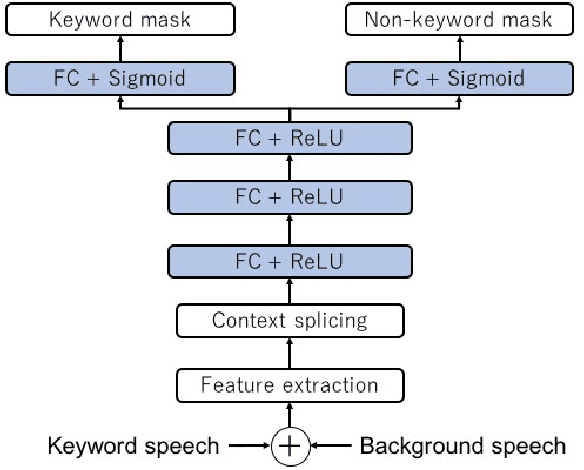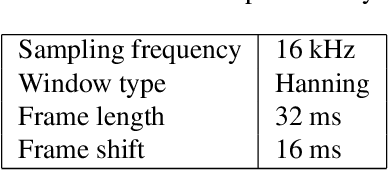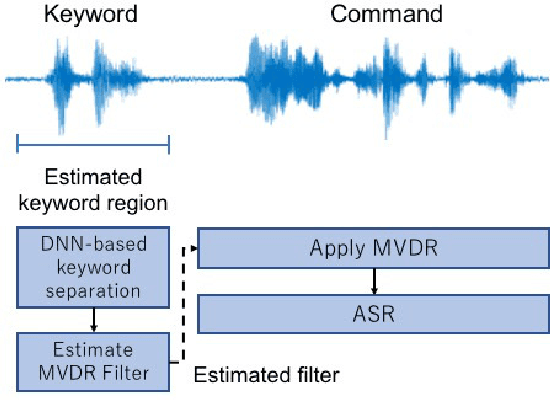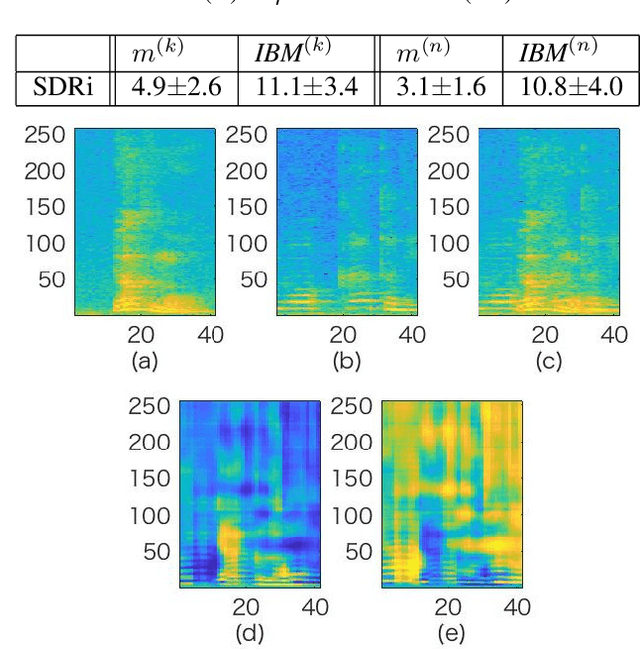Toru Taniguchi
Enhancing Large Language Model-based Speech Recognition by Contextualization for Rare and Ambiguous Words
Aug 15, 2024Abstract:We develop a large language model (LLM) based automatic speech recognition (ASR) system that can be contextualized by providing keywords as prior information in text prompts. We adopt decoder-only architecture and use our in-house LLM, PLaMo-100B, pre-trained from scratch using datasets dominated by Japanese and English texts as the decoder. We adopt a pre-trained Whisper encoder as an audio encoder, and the audio embeddings from the audio encoder are projected to the text embedding space by an adapter layer and concatenated with text embeddings converted from text prompts to form inputs to the decoder. By providing keywords as prior information in the text prompts, we can contextualize our LLM-based ASR system without modifying the model architecture to transcribe ambiguous words in the input audio accurately. Experimental results demonstrate that providing keywords to the decoder can significantly improve the recognition performance of rare and ambiguous words.
An Investigation of End-to-End Multichannel Speech Recognition for Reverberant and Mismatch Conditions
Apr 28, 2019


Abstract:Sequence-to-sequence (S2S) modeling is becoming a popular paradigm for automatic speech recognition (ASR) because of its ability to jointly optimize all the conventional ASR components in an end-to-end (E2E) fashion. This report investigates the ability of E2E ASR from standard close-talk to far-field applications by encompassing entire multichannel speech enhancement and ASR components within the S2S model. There have been previous studies on jointly optimizing neural beamforming alongside E2E ASR for denoising. It is clear from both recent challenge outcomes and successful products that far-field systems would be incomplete without solving both denoising and dereverberation simultaneously. This report uses a recently developed architecture for far-field ASR by composing neural extensions of dereverberation and beamforming modules with the S2S ASR module as a single differentiable neural network and also clearly defining the role of each subnetwork. The original implementation of this architecture was successfully applied to the noisy speech recognition task (CHiME-4), while we applied this implementation to noisy reverberant tasks (DIRHA and REVERB). Our investigation shows that the method achieves better performance than conventional pipeline methods on the DIRHA English dataset and comparable performance on the REVERB dataset. It also has additional advantages of being neither iterative nor requiring parallel noisy and clean speech data.
Speaker Selective Beamformer with Keyword Mask Estimation
Oct 25, 2018



Abstract:This paper addresses the problem of automatic speech recognition (ASR) of a target speaker in background speech. The novelty of our approach is that we focus on a wakeup keyword, which is usually used for activating ASR systems like smart speakers. The proposed method firstly utilizes a DNN-based mask estimator to separate the mixture signal into the keyword signal uttered by the target speaker and the remaining background speech. Then the separated signals are used for calculating a beamforming filter to enhance the subsequent utterances from the target speaker. Experimental evaluations show that the trained DNN-based mask can selectively separate the keyword and background speech from the mixture signal. The effectiveness of the proposed method is also verified with Japanese ASR experiments, and we confirm that the character error rates are significantly improved by the proposed method for both simulated and real recorded test sets.
 Add to Chrome
Add to Chrome Add to Firefox
Add to Firefox Add to Edge
Add to Edge